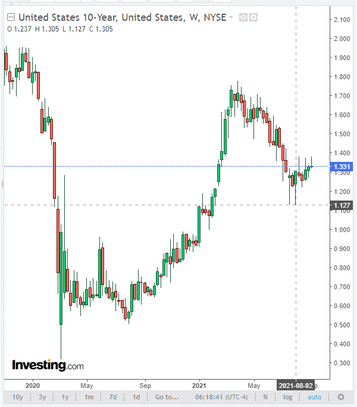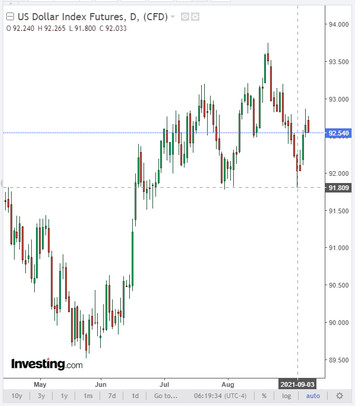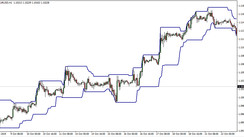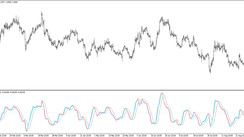Over the past 12 weeks, gold has mostly been trading in a range, and the XAU / USD pair - between levels of 1765.00 and 1835.00, not considering the sharp drop and then a recovery in early August.
At the start of today's European session, the XAU / USD pair is traded near 1795.00 mark, staying below the key resistance levels of 1800.00 and 1805.00, which are also a kind of median zone or balance zone in the above range. It is obvious that this financial market instrument needs new drivers to move in one direction or another.
An upward factor for the quotes of gold and the XAU / USD pair is the soft monetary policy of the largest central banks and the continuing uncertainty in the financial markets, associated, among other things, with the continued spread of the coronavirus in the world and with growing inflation. In this situation, gold is a traditional defensive asset.
The negative factor is the strengthening of the dollar and the rise in the yield of US Treasury bonds, which are renewing their weekly highs.

Thus, the yield of the US 10-year bonds reached a new 8-week high near 1.380% this week, after 5 weeks earlier it had declined to 1.127%. Gold, unlike government bonds, does not generate investment income, being mainly a popular defensive asset. Therefore, the growth in the yield of government bonds against the background of the Fed's inaction increases their attractiveness in comparison with gold.
The price of government bonds will start to grow, and the yield, accordingly, will fall if the Fed starts to roll back its stimulating policy, which is expressed, among other things, in huge volumes (120 billion a month) of purchases on the government bond market.
But the tightening of the Fed's monetary policy, primarily the increase in the interest rate, will also contribute to the decline in gold quotes, as the cost of borrowing for its purchase and storage will grow.
But so far there is no talk of raising the Fed's interest rate. Recent statements by Fed Chairman Jerome Powell said central bank officials are extremely worried about the continued spread of the coronavirus in the world and the United States, which poses the threat of a new economic slowdown. The sharp increase in the number of cases of Covid-19 infection in the United States is forcing the government and the Fed to look for new ways to support the population and the economy, expressed, among other things, in additional pumping of liquidity into the financial system. This, in turn, leads, on the one hand, to an increase in inflation, and on the other, to a cheaper dollar and, accordingly, to an increase in gold quotations.
Powell has also repeatedly stated earlier that before embarking on an interest rate hike, to which gold quotes are so sensitive, the Fed will first begin to reduce purchases on the US government bond market. And about this, too, as promised Powell, investors will be notified in advance to avoid sharp fluctuations in the financial markets.
So far, after a controversial US labor market report for August, the likelihood of a soon start to the Fed's stimulus cut period has diminished as the labor market recovery (the main factor for the Fed to begin phasing out the QE program) seems uneven. However, the continued soft monetary policy helps stock indices to renew record highs, which leads to a weakening of demand for gold from investors.
Thus, at the moment there is a very delicate balance between a stable but relatively slow economic recovery, soft monetary policy amid rising inflation and fears about the coronavirus, which creates favorable conditions for the growth of gold prices.
However, gold quotes in the short term may come under pressure if one of these factors changes, and the dollar begins to strengthen at a faster pace.
In view of this, gold is likely to remain trading close to current levels until a new strong driver emerges (or a combination of several coinciding factors) to break out of the resulting range. But before deciding to build up positions on defensive assets, including gold, investors will expect additional signs of a slowdown in the economy.
The US dollar continued to strengthen on Tuesday and Wednesday, putting pressure on gold. The DXY dollar index rose to 92.86, but then declined. During today's Asian trading session and early European, the DXY dollar index has been declining. As of this writing, DXY dollar futures are traded close to 92.54, still 74 points above the local 9-week low of 91.80 reached late last week.

Federal Reserve Bank of New York President John Williams, who also serves as vice chairman of the Federal Reserve's Open Market Committee, which makes interest rate decisions, said on Wednesday that “it will take a long time for a full recovery from the pandemic. The latest data signal that the spread of the delta strain is putting pressure on consumer spending and employment, and the growth rate (of the economy) is slowing down somewhat compared to the first half (of this year)."
Investor optimism subsided after the release of an employment report last Friday, which pointed to a sharp slowdown in hiring in the United States, as well as signs of a weakening economic recovery due to the delta strain of coronavirus.
Therefore, market participants need new data to assess the prospects for economic growth. Today they will follow the ECB press conference, which starts at 12:30 (GMT), as well as study the weekly report of the US Department of Labor (also at 12:30 (GMT), will be published fresh data on applications for unemployment benefits, according to which can be judged on the number of layoffs). According to economists, at the beginning of September the number of initial jobless claims was close to a pandemic low, at about 340 thousand applications. If the weekly data on the number of jobless claims turn out to be worse than expected and the median (4-week) value of 335 thousand applications, the sentiment of the dollar's buyers will worsen. At the same time, every deterioration in the macroeconomic situation, especially in the labor market, gives investors hope that the US central bank will continue to support the markets by continuing its super soft policy. And this is a positive factor for gold buyers.





